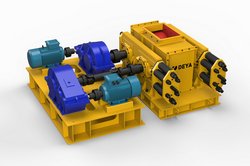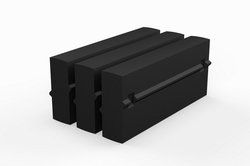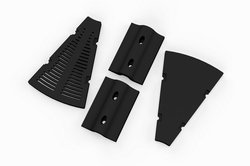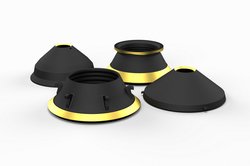How to operate a Symons cone crusher
Terminology for symons cone crusher
Throughout this article, certain terms will be used in describing the symons cone crusher and its operation. In order that there will be no possibility of confusion or misunderstanding, these terms are defined as to their usage.
● Feed: The raw material that is to be crushed.
● Liners: The concave and mantle are the crushing members and are commonly referred to as liners.
● Cavity: The internal contour formed by the two crushing members.
● Parallel zone: With the liners in their closest relationship during the gyrating cycle, the lower portion of both the concave and mantle, for some distance, will be parallel to each other. This area is known as the parallel zone.
● Feed opening (Closed side): The smallest distance between the top of the crushing members as measured when the two crushing members are at their closest relationship during their gyrating cycle.
● Feed opening (Open side): The largest distance between the top of the crushing members as measured when the two crushing members are at their farthest relationship during the gyrating cycle. The feed opening (open side) determines the maximum size of feed.
● Discharge setting: The distance between the bottom of the crushing members as measured at the point where the two crushing members are at their closest relationship during their gyrating cycle. This discharge setting regulates product size.
● Minimum discharge setting: The smallest permissible distance between the bottom of the crushing members as measured when the two crushing members are at their closest relationship during the gyrating cycle.
● Discharge opening: The distance between the bottom of the crushing members as measured at the point where the two crushing members are at their farther relationship during their gyrating cycle. This wide opening permits rapid discharge if the crushed material.
● Product size: The size of the screened material after it has been crushed.
● Capacity: The output of the symons cone crusher computed in tons per hour.
Ways for operate a symons cone crusher
Preparations before starting
Before starting the crusher, check the following items
● Check all bolts for looseness including the foundation bolts.
● Check the compression length of the release spring.
● Check the tension of V-bolts.
● Check the direction of rotation.
● Check the lubrication system.
a. Check that the correct lubricating oil is being used and that lubricating system has been installed correctly.
b. Start the independently motor driven oil pump.
Remove the inspection cover in the oil tank and check the oil drain line inside the tank be certain the oil is circulating. Under normal operating conditions, the oil flowing out of the drain line should be at least half fill the pipe.
c. Check for oil leakage in both pipe line and crusher.
● Make a final inspection of the crusher to be certain that no tools or mechanical obstructions are on the symons crusher, that all joints and fasteners are properly tightened, that no leaks are appeared.
● Rotate the countershaft by hand to check that the mantle is not striking the concave and that there are no other mechanical difficulties.
● After all the previous steps have been checked, start the crusher.
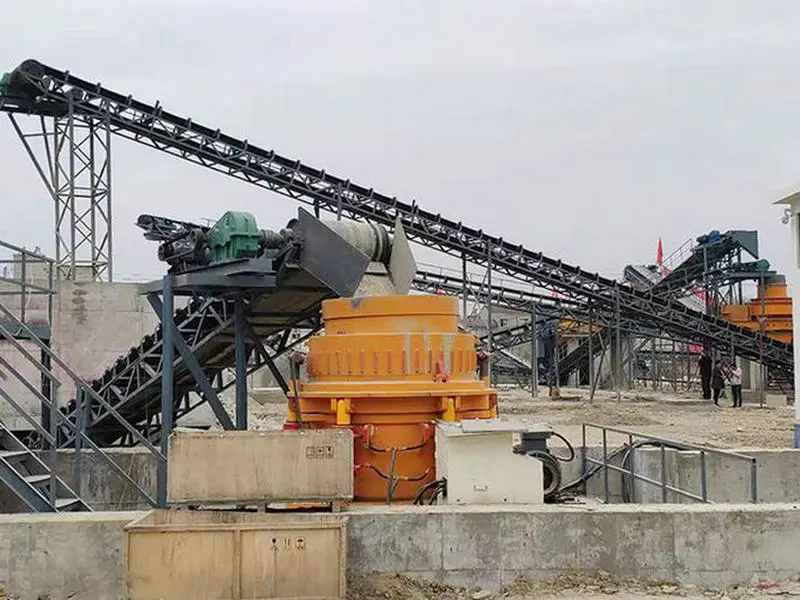
Starting the symons cone crusher
● Start the engine or motor.
● Check the rotation of the countershaft.
● Check the speed of the countershaft.
Note : Don’t allow the symons cone crusher to operate longer than two minutes if no oil has appeared inside feed gauge or at the drain line inside the oil tank, as serious damage can result to the crusher normally, oil flowing out of the drain line should be of sufficient volume as to half fill the pipe.
Lack of oil flow can be caused by several conditions; insufficient oil in lubricating system, oil pump failure, obstructions in feed line or an incorrect setting of the relief valve.
● Although the symons crusher was test run at the Deya Machinery’s workshop, it is advisable to permit the crusher to run without a load or at reduced load for several hours.
This will permit a general running-in of the symons cone crusher and an assurance that all parts are functioning properly as well as being thoroughly lubricated.
It is also advisable to check the oil temperature more closely during this time.
● After running the symons cone crusher without a load or at reduced load for a reasonable time, supply the symons cone crusher with normal feed.
Stopping the symons cone crusher
● Stop supplying the feed.
● After confirming the material in the crushing chamber is discharged thoroughly, stop the symons cone crusher.
● Stop the lubricating system.
Countershaft rotation
All standard and short head symons cone crushers are equipped for clockwise rotation of the countershaft.
Direction of rotation is as viewed from the drive end of the countershaft and should not be reversed.
Direction is important as the self-tightening tightener nut automatically keeps the mantle tight against the mantle core, relying on the correct rotation of the countershaft to provide this self-tightening feature.
Discharge setting
The symons cone crusher setting is dependent on the size of product required. In the first instances the top shell should be set co that the opening between the crushing members on the closed side, measures a distance slightly less than the maximum size of the product required.
In addition to resetting the top shell when changing the size of the product, it is also necessary to adjust the top shell to compensate for wear on the crushing members.
The setting of the symons crusher is changed by either lowering or raising the top shell in the top frame, by turning the top shell assembly clockwise to lower and counter clockwise to raise.
Lowering the top shell decreases the setting, raising the top shell increases the setting.
Deya Machinery’s symons cone crushers are equipped with hydraulic ram and adjustment cap screw arrangement to adjust the setting.
To adjust the setting, proceed as follows:
● Loosen the adjustment cap screw sufficiently to allow the top shell to be turned into the top frame to the desired setting.
A special tool is provided for this purpose.
● Turn over the cap frame stopper.
● Switch the hydraulic pump on, and turn the top shell assembly to the desired setting by extending or retracting the hydraulic ram with lever.
● Tighten the adjustment cap screws. Don’t tighten them in a consecutive order, but alternate 180˚ so that an even rise of the top shell assembly will be made.
Sledge the cap screws tight, using a pipe-extension on the wrench handles if necessary to insure maximum tightness.
It is important that these cap screws are absolutely tight to prevent any movement what-so-ever in the top shell threads.
● Check the screws for tightness after the crusher has been in operating for several hours and retighten, if necessary.
Minimum setting
Under no circumstances should the symons cone crusher be set closer than the recommended minimum setting for that particular size of crusher.
Operating with less than the recommended minimum setting causes excessive spring action and produces an unsatisfactory product.
This also places an undue strain on the crusher, resulting in added maintenance expense.
Always operate the symons cone crusher according to Deya Machinery's operation manual.

